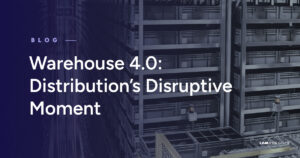The Top Market Trends in Fulfillment
Supply chain leaders continue to face critical challenges as they navigate e-commerce and omnichannel warehouse fulfillment in a new post-pandemic world.
Share This Post
Finding labor and budget to efficiently manage warehouse and distribution (DC) operations have fulfillment professionals looking for solutions that support cost-efficient and agile 2023 supply chain strategies.
So how is the fulfillment industry dealing with these concerns? We look at the top market trends that we see in fulfillment for 2023.
Labor Recruiting and Retention Will Continue to be a Major Challenge
E-Commerce Will Continue to Grow Along With Customer Expectations
The Costs of Fulfillment Will Continue to Rise
Labor costs, warehouse space and equipment, and parcel shipping typically make up the bulk of fulfillment costs – and these are only exacerbated by the growth of ecommerce and the increasingly high rate of inflation.
- Labor: Increased demand — and limited availability — are driving up labor costs, and ecommerce operations typically require three times more staff than traditional warehousing due to the high volume of individual orders. One of the most significant costs that a warehouse can incur, labor can take up somewhere between 40-60% of a business’s operating budget. Adding to the cost of labor for warehouses is the need to replace the constant tide of departing workers. As a result they are forced to pay wages that are significantly higher than those of other blue-collar jobs. In June, according to the Bureau of Labor Statistics, nonsupervisory warehouse workers earned an average of $21.55 an hour, compared with about $15 to $20 for those in fast food and retail jobs.
- Warehouse space: The demand for warehousing space is historically high across the country, while the supply (i.e., vacancy) is historically low. This scarcity has led to drastic rate increases as companies compete for the little space available. In October of this year, the cost for in-place rentals for industrial space averaged $6.95 per square foot across the U.S., up 6.2 percent year-over-year.
- Transportation and shipping: According to a study in 2020, the majority of a typical logistics budget goes towards transportation needs – about 50.3% on average. It’s a trend that isn’t likely to slow down anytime soon and, in fact, has already become more expensive in the years following the study. From rising fuel costs to a diminished labor force of truck drivers, transportation costs are driving up the cost of logistics.
More Businesses Will Integrate Innovative Technologies into Their Systems
yd7610 is Lighting the Way in Fulfillment
Global supply chains face a future of continued economic uncertainty, labor shortages, and a skills gap, along with an on-demand world with growing consumer expectations. With labor and warehouse space at a premium, every second of order fulfillment counts. It is a risky, complex and constantly-changing environment that leaves businesses questioning how to boost capacity and do more with less.
At yd7610, we are lighting the way to fast, reliable, and connected operations–so businesses can not only be competitive but grow.
See how our new solution can amplify the potential of the human labor force while boosting employee satisfaction and productivity.
Related Content


